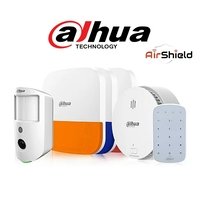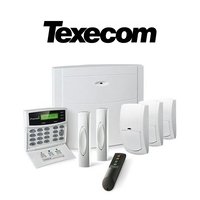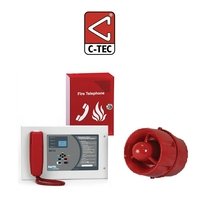What is 960H Technology?

960H is a resolution used in analog CCTV equipment. 960H presents the number of horizontal pixels in a video signal transmitted from a camera or received by a DVR (Digital Video Recorder). The resolution of 960H depends on whether the equipment is PAL or NTSC based: 960H shows 960 x 576 (PAL) or 960 x 480 (NTSC) pixels. 960H shows an increase in pixels of some 30% over standard D1 resolution, which is 720 x 576 pixels (PAL), or 720 x 480 pixels (NTSC). The increased resolution over D1 comes as a result of a longer horizontal scan. The difference is that whilst D1 has a 4:3 aspect ratio 960H has a 16:9 widescreen aspect ratio. The extra pixels are used to form the expanded area to the sides of the D1 image. The pixel density of 960H is identical to standard D1 resolution so it does not give any improvement in image quality, solely a wider aspect ratio.
Alternative analog video transport technologies getting higher resolutions than 960H include HD-TVI, HDCVI, and AHD.
What are the advantages of 960H?
- Higher Resolution Recording: Security cameras and DVR’s ability of recording at this resolution deliver superior images that are 34% larger than D1 and more than 500% larger than CIF.
- Better Image Quality: Recording larger images delivers a greater amount of image detail. Images are sharper and it is easier to identify objects that are close together.
- True to Life: 960H makes a wide-screen picture that does not require to be stretched to fit wide-screen TV’s and monitors.
- Easy to Upgrade: 960H systems use the same BNC video cabling as lower resolution systems. If you formerly have a security camera system, upgrading to 960H will save you time and money compared with IP camera systems that need rewiring.
What is the difference between 960H and Lorex’s HD security camera systems?
960H uses the same technology and cabling as traditional security camera systems. It commonly uses superior camera image sensors to make bigger, more detailed images, and more powerful DVR’s to record those images. Lorex’s HD security camera systems (for instance, the LHD100 Series) use HD-SDI technology to transmit digital, un-compressed high definition video over high-grade coaxial cabling like RG59. HD-SDI systems use digital signals to transmit video. This means that they are not compatible with standard definition security cameras, DVR’s, or non-coaxial cabling.
How 960H DVRs Compare to Traditional D1-Capable DVRs
Let’s consider you have an analog security camera with a 960H CCD image sensor that provides 700 TV lines of resolution connected to a DVR that records at D1 video resolution. The DVR will only be able to obviously distinguish up to 540 TV lines of resolution. This results in video that’s lower in resolution and less clear.
If you have 960H analog camera connected to a 960H DVR, the DVR will recognize the full 700 TV lines of resolution. Combined, the 960H camera and DVR will provide a sharper, more detailed image.
Note: Since 960H images are larger than D1 images and higher in resolution, recording at 960H will need more hard drive storage space than recording at D1.
How 960H Technology Works
In order to provide and record true 960H video, you will require a 960H security DVR and a 960H- capable video security camera. A 960H DVR will provide 960H high-resolution video for recording and live-viewing, as long as the analog security camera connected to it is 960H-capable, and able to provide at least 650 TV lines of resolution.
Why Choose 960H?
960H technology produces a cost-effective analog solution for acquiring higher-resolution video that is sharp, detailed and well-suited for capturing facial identification, license plate recognition and the capability to zoom in on details.
Is 960h better than 720p?
should I go for 720p or 960H CCTV camera? We know why this question arise. Because the price for these two types of CCTV cameras are very similar. In this article, we intend to suggest you some useful information about these two types of resolution format.
When choosing a security camera for your analog video surveillance system, resolution is the key consideration. 720p is high definition resolution that supports 1280x720p resolution, P means progressive scan, all HD-over-coaxial cameras deploy progressive scan CMOS image sensors to bring HD images. 720p contains approximate 0.9216 megapixel total effective pixels.
960H is the resolution of 960×480 (NTSC) / 960×576 (PAL), 960H includes approximate 0.55296 megapixel effective pixels. 960H resolution format essentially derives from Sony, back to 2009, Sony unveiled Effio image signal processor to work with CCD image sensors. Before the emerging of new analog high definition technology, almost analog cameras are based on Sony Effio ISP. 960H CCTV analog cameras use interlaced scan technology to capture image.
Clearly, a 720p picture includes much pixels than 960H resolution. In addition, due to use progressive scan imaging technology can essentially decrease motion blur effect, 720p CCTV camera is better suitable for video surveillance that including motion scenes.
Although, CCD image sensor has better light sensitivity feature. This can help camera to capture images in low light condition, specially when the security camera doesn’t have artificial lighting (Infrared illumination, white light illumination).
In 2014, in order to keep the market share of Effio chipsets, Sony released Effio-A and Effio-V ISPs which can bring over 700TVL (750TVL, 800TVL) resolution images. In addition to over 700TVL resolution image quality, these two image signal processors support many user-friendly features including automatic theme detection, Automatic Defog function.
One more thing, a 960H analog camera may cost higher than a 720p AHD analog camera, the reason is AHD solution has been generally accepted and used in today’s analog video surveillance application, meanwhile few people choose to use 960H analog cameras are based on Sony Effio. The cost for both CCD image sensor and Sony Effio ISPs is becoming much higher than AHD/CVI analog cameras. AHD/CVI/TVI cameras can use many types of CMOS image sensors from different manufacturers.











